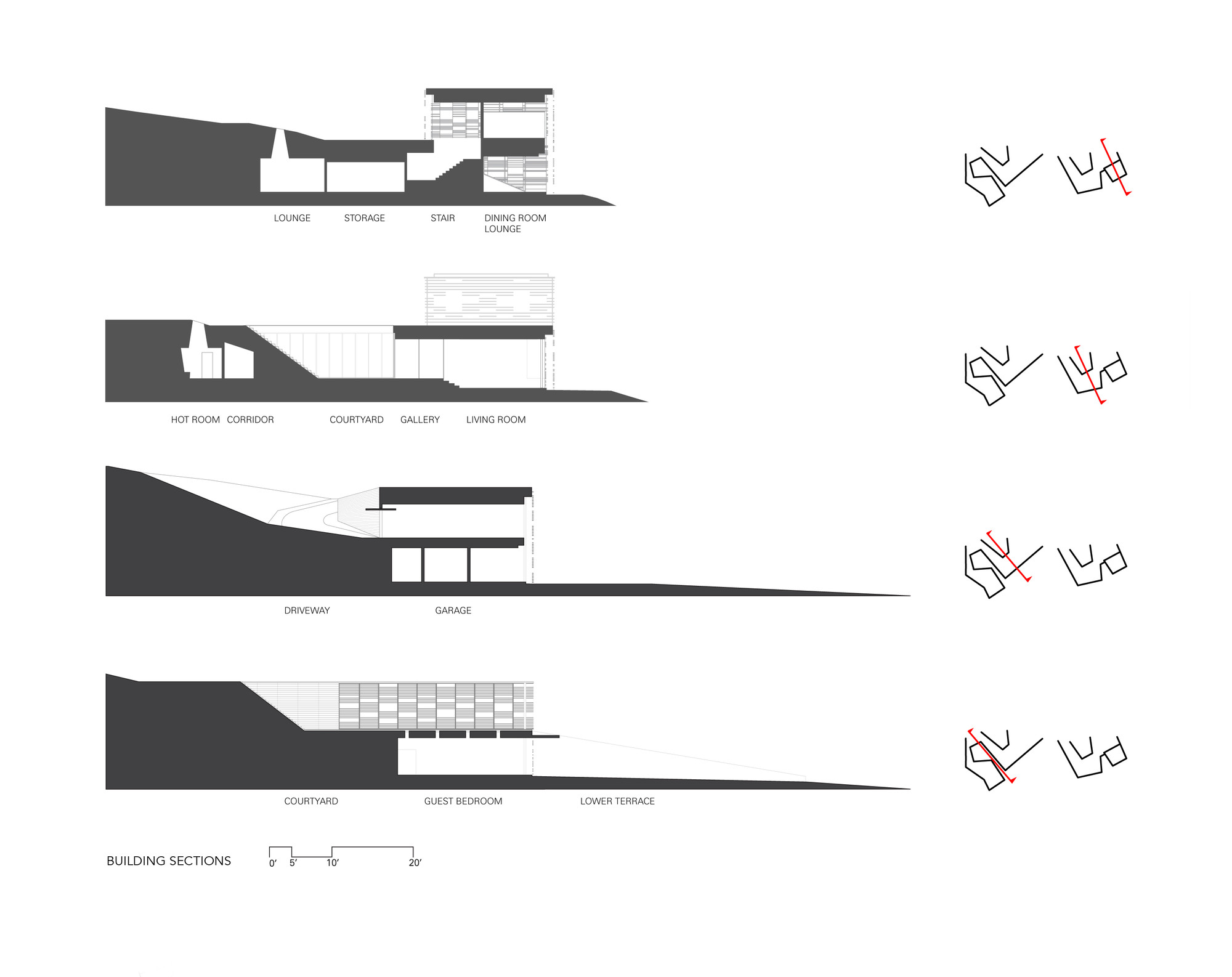
-
Architects: GLUCK+
- Year: 2010
-
Photographs:Paul Warchol

Inspired by the tradition of Adirondack Great Camps, this modern family retreat is an escape nestled into a heavily wooded lakefront property in Upstate New York. Like these early examples, the residential and recreational program is distributed among a series of buildings located across the site to promote engagement with the landscape.

The requisite bulk of a large program is set into the sloping landscape, providing a play of levels and terraces that diminish the built presence and enhance the experience of the lakeside site. These “non-buildings” are buried to integrate them into the landscape, with every interior level opening to the ground plane to encourage interaction between indoor and outdoor living. Full-height glass panels slide back in bedrooms to become sleeping porches, while sunken courtyards become outdoor living rooms.

The family house is the more private of these two main structures with entry and movement less prescribed through the building than the recreation building, whose program is designed as the gathering place for guests, arriving from their “cabins in the woods.” The former includes the master suite, guest bedrooms, living and dining, kitchen and an open art gallery. The latter houses lap pool and spa, gym, steam room, changing rooms, kitchens, open living spaces and a formal dining room that opens up to become a screened porch. Visitors navigate their own interpretative plan in and out and through the reconfigured landscape.

Wood screens break up the reflections of the glass façades facing the Lake to modulate privacy, scale the façade and soften the interior light. From the Lake, the buildings peek through the trees, barely visible in their wood screen camouflage. The new occupiable green roofs in fact create new ground, expanding the use of the natural site.

“Burying” the built project works on multiple levels: it is energy efficient, it sits lightly on the landscape, and creates an architectural tension between the clarity and purity of the exposed construction above the ground plan and the mystery and eccentricity of the spaces below. What was inhospitable and uninhabitable becomes new playing fields, outdoor dining terraces and recreational lookouts to more fully experience the exceptional characteristics of the geography of that particular place.
















